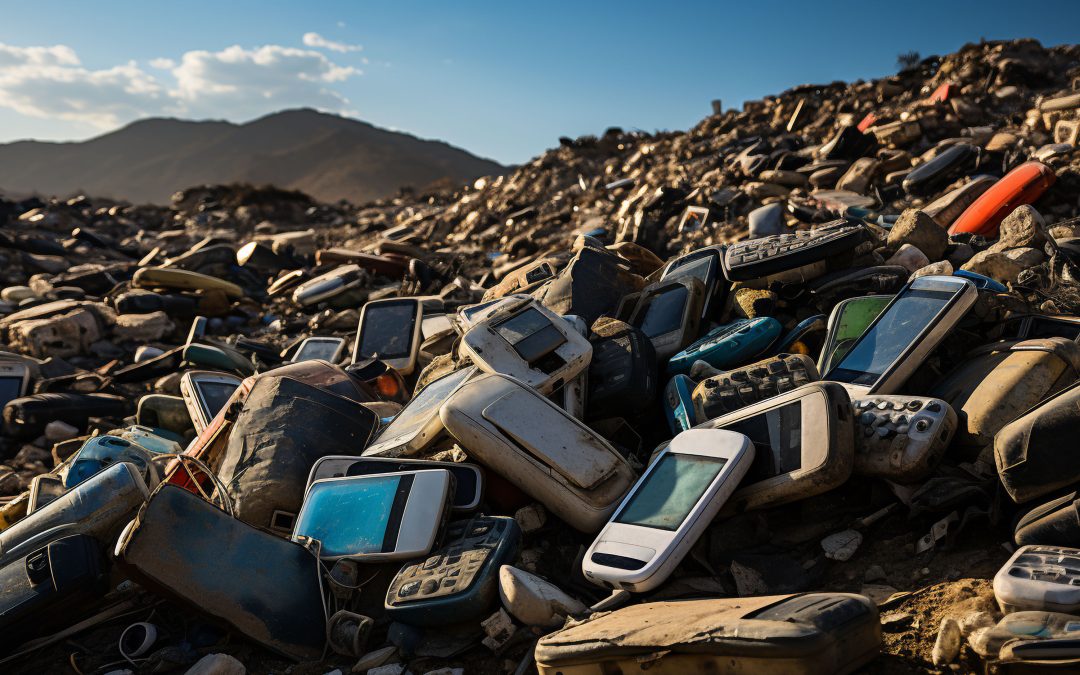Why you shouldn’t buy the latest smartphone
New research from the University of Florida reveals impact of e-waste on consumers, producers and the environment.
When Apple or Samsung announces a new smartphone, do you roll your eyes or are you first in line at BestBuy?
New models for smartphones are being released faster than most people can keep up. This influx of devices is great for updating trends, but what does it do to our planet? According to new research by McClatchy Professor Asoo Vakharia of the University of Florida Warrington College of Business, the environment can’t keep up with our ever-increasing cache of devices, either.
Most electronics have a shelf life of two years, a frequency that keeps consumers up to date but results in millions of tons of disposal each year. Every state has their own method of processing this electronic waste, or e-waste. Recognizing an opportunity to evaluate business principles and sustainability, Vakharia set out to discover which method is best.
When thinking about e-waste, there are three stakeholders to consider: consumers, the people who buy smartphones; producers, the ones who make them; and the environment, which deals with whatever is left behind. Most methods for controlling e-waste can be narrowed down to taxes and who is paying them: consumers or producers.

McClatchy Professor Asoo Vakharia
“Immediately [if] you tax there is a reduction of e-waste that takes place,” Vakharia explained. “If you tax the producer, the way e-waste gets reduced is the producer [is] incentivized to use recycled parts, so you re-use more, reducing waste. If the consumer is taxed, on the other hand, there’s an indirect impact, which is that if I’m going to be taxed on buying a new PC or a new monitor, I might use my older one longer.”
Connecticut practices the former concept, charging producers based on the volume of their waste, while California taxes those buying their products. To their surprise, Vakharia and his co-authors, Associate Professor Tharanga Rajapakshe and Lan Wang, discovered that neither option makes much of a difference for corporations; in both cases, they will experience a return on investment.
“People have argued that anytime you do this environmental good there’s never a positive aspect,” Vakharia said, playing devil’s advocate. “What we found, surprisingly, was that there is a positive aspect to this, regardless of whether you’re taxing the producer or the consumer.”
Naturally, consumers would prefer not to be taxed so they can enjoy more money in their pockets, but because consumer tax encourages consumers to buy less products, Vakharia’s other finding reveals that it will make more of an impact environmentally. A winning compromise could be found by offering a reduced tax on remanufactured items: When remanufactured devices are more affordable, consumers are more likely to buy them and producers are more likely to offer them instead of new ones. Offering remanufactured devices, and levying a lower consumer tax on them, is therefore a preferable policy for all three stakeholders.
While this solution balances the impact on consumers, producers and the environment, there is no perfect solution, Vakharia says. Ultimately, his research can inform policymakers as they strive toward a common goal. To reduce e-waste efficiently, it would be best for all of the states to settle on one method and unite in their efforts.
On a smaller scale, no matter which state you live in, ask yourself next time a smartphone model is announced whether it’s really time for a replacement.




